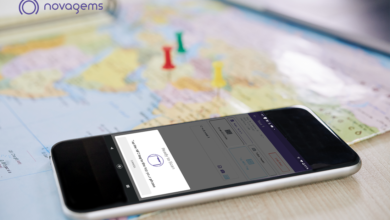In recent years, 3D animation has become an essential tool in the realm of education. Its capacity to simplify complex ideas, engage students, and foster creative learning has opened up new opportunities for educational institutions. With the rise of advanced technologies, many schools, universities, and training centers are now incorporating 3D animation services into their curricula and materials. Whether it’s explaining scientific concepts or creating virtual historical reconstructions, the use of 3D animations significantly enhances learning experiences.
In this blog, we will delve into the best 3D animation practices for educational institutions, discussing how to implement them effectively. We will also explore the role of 3D animated logos in branding for educational institutions.
1. Identify Learning Objectives
Before diving into creating a 3D animation, educational institutions must first identify clear learning objectives. This involves understanding the concepts or lessons that the animation aims to explain. The purpose of animation in education is to clarify complex information, so it’s important to focus on key teaching goals. Best Practices:- Collaborate with subject matter experts to ensure that the animation aligns with curriculum requirements.
- Break down complex topics into digestible components that can be visually represented.
- Use animations to explain concepts that are otherwise difficult to demonstrate through traditional teaching methods (e.g., molecular biology, physics phenomena, or historical events).
2. Keep Content Engaging but Simple
While 3D animations offer endless possibilities for creativity, it’s essential to strike a balance between visual appeal and clarity. Overcomplicating animations with too much detail can overwhelm students. Instead, educational 3D animations should be designed to capture attention and engage learners while keeping the content simple enough to aid comprehension. Best Practices:- Use storytelling to keep students engaged. Present information in a narrative format that guides students through the lesson in an intuitive way.
- Keep animations concise. Educational videos should not be too long, as students may lose focus.
- Use bright colors and smooth transitions to maintain a balance between aesthetic appeal and clarity of content.
3. Make Use of Interactive 3D Animations
One of the most effective uses of 3D animation services in education is incorporating interactive elements. Allowing students to control or interact with animated objects promotes active learning, giving them the opportunity to explore content at their own pace. Best Practices:- Create interactive simulations where students can experiment with virtual elements. For example, a chemistry lesson could feature animated 3D molecules that students can manipulate to understand molecular structures.
- Use augmented reality (AR) and virtual reality (VR) to create immersive experiences. These technologies allow students to step into virtual worlds and engage with 3D models in real time.
- Incorporate quizzes or decision-based scenarios where students must make choices that affect the outcome of the animation, promoting critical thinking.
4. Collaborate with Professional 3D Animation Services
Many educational institutions lack the internal expertise or resources to create high-quality 3D animations. Outsourcing these tasks to professional 3D animation services is often the best solution. Skilled animators can bring educational content to life with greater precision and creativity. Best Practices:- Look for 3D animation services with experience in creating educational content. Such companies understand the balance between creative design and informative content.
- Provide clear guidelines and reference materials to ensure that the animations align with the institution’s learning objectives and teaching style.
- Request feedback from teachers and students during the development process to ensure that the final product meets the needs of both educators and learners.
5. Incorporate 3D Animation into Existing Learning Platforms
To maximize the benefits of 3D animation, it’s important for educational institutions to integrate these animations into existing learning management systems (LMS). This ensures that students have easy access to the materials and can view them in the context of their overall studies. Best Practices:- Embed 3D animations into online courses or e-learning platforms so that students can watch them as part of their learning modules.
- Use animation as supplementary material during classroom lessons or virtual lectures.
- Consider creating a library of 3D animations organized by subject or course topic, which students can refer to when studying or completing assignments.
6. Adapt 3D Animations for Different Learning Styles
Not all students learn in the same way. While some learners may thrive on visual stimuli, others may require more detailed explanations or interactive components. To accommodate diverse learning needs, educational institutions should create 3D animations that cater to multiple learning styles. Best Practices:- Provide optional voiceovers or subtitles in animations to benefit auditory and visual learners.
- Include pauses or breaks in the animations where students can reflect on what they have learned or engage in discussions with classmates.
- Offer different versions of animations that vary in complexity, allowing advanced learners to explore more detailed content, while offering simpler versions for those who need it.
7. Use 3D Animated Logos for Institutional Branding
Beyond educational content, educational institutions can also benefit from using 3D animated logos for branding purposes. A well-crafted 3D animated logo enhances an institution’s digital presence, making it more memorable and visually appealing. Best Practices:- Ensure the 3D animated logo is consistent with the institution’s overall branding (colors, font, design aesthetic).
- Use the 3D animated logo in various digital materials, such as introductory slides for online courses, social media content, and promotional videos.
- Keep the animation short, ensuring it doesn’t detract from the primary educational content. A well-designed animated logo should enhance the viewer’s experience, not dominate it.
8. Regularly Update 3D Animations
Educational content is constantly evolving. As new discoveries are made and technologies advance, it’s important for educational institutions to regularly update their 3D animations to ensure accuracy and relevance. Best Practices:- Schedule regular reviews of existing animations to identify outdated content.
- Work with 3D animation services to update animations with the latest information, visuals, or technological features.
- Encourage feedback from teachers and students to determine which animations need improvement or reworking.
9. Measure the Impact of 3D Animations on Learning
To evaluate the success of 3D animation in education, institutions should regularly assess its impact on student learning. This involves measuring both the engagement and comprehension of students who use 3D-animated resources. Best Practices:- Conduct pre- and post-tests to determine whether students’ understanding of a topic has improved after viewing the animation.
- Gather feedback through surveys or focus groups to learn how students and teachers perceive the effectiveness of the animations.
- Track engagement metrics on e-learning platforms, such as completion rates, viewing times, and repeat views.





